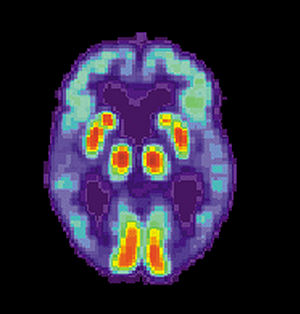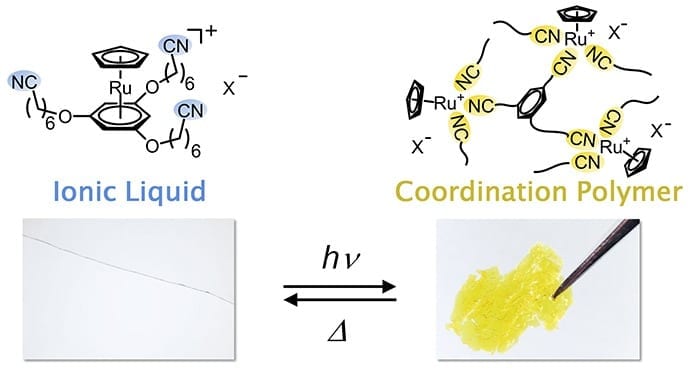Photographic Memory
“Nana technology” could compensate for failing memories among people with Alzheimer’s disease, amnesia and other difficulties by taking over some of the brain work.
Hopes for new Alzheimer’s drugs that would slow or stop the disease’s inexorable decline have repeatedly foundered in recent years. Large pharmaceutical companies, which have pushed ahead with drugs that stop the buildup of toxic proteins that damage and kill brain cells, have reported a recurring string of bad news. Just one example: Eli Lilly? had to suspend last year the trial of a pharmaceutical designed to prevent the production of the toxic amyloid-beta protein because patients’ cognition actually worsened on the drug.
The annual estimated financial burden in the U.S. alone, as estimated by the Alzheimer’s Association, exceeds $180 billion, as the disease leads to progressive deterioration of the brain (see image below).
One off-kilter approach would deploy “nana technologies” that marshal the ingenuity of the wildly successful consumer electronics industry to help patients and, even more so, the 15 million spouses and other unpaid caregivers in the U.S. whose lives are turned into chaos when the disease afflicts a loved one. In recent weeks GTX Corp. introduced GPS tracking shoes that enable a caregiver to set up “geo fences” to prevent patients from wandering, getting lost and sometimes dying from exposure or getting hit when venturing onto a roadway.
Another idea that does not involve a pill would actually use the increasing sophistication of processing, memory and storage to off-load to a computing device some of the tasks that are normally the work of the brain’s hippocampus and entorhinal cortex. A device called SenseCam attracted buzz a few years ago because of its ability to do “life-logging.” Gordon Bell of Microsoft Research, the engineer who had overseen development of the VAX minicomputer in the 1970s, co-authored an article in the March 2007 issue of Scientific American that chronicled his experiment, which recorded his every waking moment with a camera dangling from his neck that automatically snapped pictures as Bell moved about his day.
Consumers have even embraced a version of life-logging with the emergence of wearable devices that can track step counts, mood, heart rate or sleep quality. “Quantified self” meet-ups now take place in Portland, Ore., Brussels and Cape Town, South Africa, among other places.
But the potentially revolutionary impact of the technology goes beyond overzealous gadget freaks and will only be realized if electronic memories start to compensate for failing neural memories. The current issue of the journal Memory, devoted entirely to SenseCam, contains a series of articles that are a compendium from some of the dozens of groups now working with the technology on pilot tests using the device for memory impairments that result, not only from dementia, but also from amnesia, traumatic brain injury and aphasia as well.
If it were not originally crafted at Microsoft Research, SenseCam might be called an “EyePod.” The small rectangular box, tethered from the neck so that it positions in the middle of one’s chest, houses a fish-eye lens to capture as much of a scene as possible. Every 30 seconds another image gets stored to the one-gigabyte solid-state memory. If you move to the next room—dark to bright—a sensor tells SenseCam to snap again. If a warm body passes nearby, an infrared sensor signals that it is time for yet another photo op. All of this yields a thumbnail chronology of the minutiae of the wearer’s existence. The inspiration for SenseCam was the airplane black-box recorder—except, in this case, a recorder adapted to the unfolding trajectory of a person’s day (Leopold and Molly Bloom on social media) rather than a transcript from the cockpit of American Airlines Flight 55 from Manchester, England, to Chicago. Later, you pipe this electronic thumbnail record into a PC for display of images either individually or in chronological sequence. Later, the patient can then “re-seize” the day by methodically studying what transpired. A U.K. company, Vicon, has now commercialized the technology under the name Revue.
Almost as soon as the device was created at Microsoft Research Cambridge in 2003, the medical research community wanted to use it for patients with memory impairments. As they have become more accustomed to working with SenseCam, investigators have begun to think of the train of imagery spit out from its USB port as a form of calisthenics for enhancing the mental process known as autobiographical memory, the recollection of past events in their temporal and spatial context. The ability to engage in this type of mental time travel is what Alzheimer’s disease (AD) obliterates. Other neurological conditions have similar but often less pronounced effects. The specificity with which we recall things, moreover, is also diminished through the haze of depression, schizophrenia and other psychiatric disorders.
The pilot studies so far have yet to transcend the level of anecdotal evidence, but these single cases are compelling. Steve Hodges, one of the device’s creators at Microsoft Research, remembers an Alzheimer’s patient who described a portion of a day trip in Spain that he took with his partner; he was wearing SenseCam, which produced images that he was later able to “study.” The next moment, though, the patient wondered how he gotten to the couple’s destination. His wife then interjected that he had taken the device off during the train ride because he was embarrassed to be seen with a funny-looking gizmo around his neck. In another case, an amnesic patient used a SenseCam on a trip to London, but the batteries died during part of her travels. She remembered most of the journey, reviewed after the trip, but not the two-hour interval when the cam was out. Still another instance involved a woman with memory difficulties, although not necessarily Alzheimer’s, who had a better recollection of events when using SenseCam than when her husband kept a diary of events on which he quizzed her the next day.










